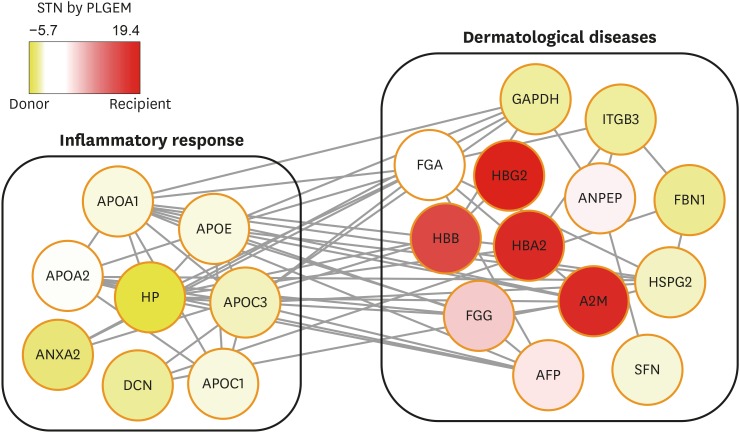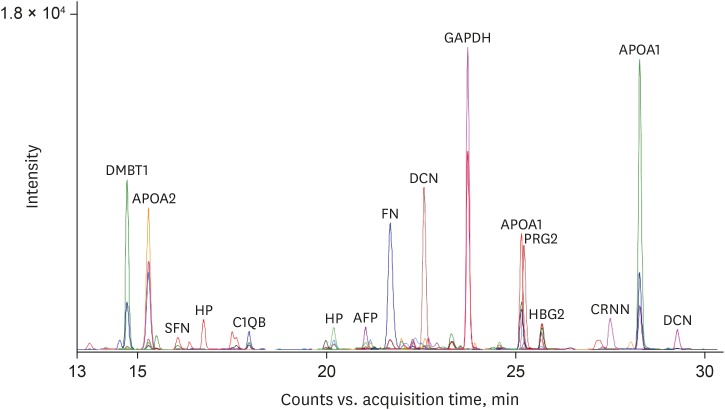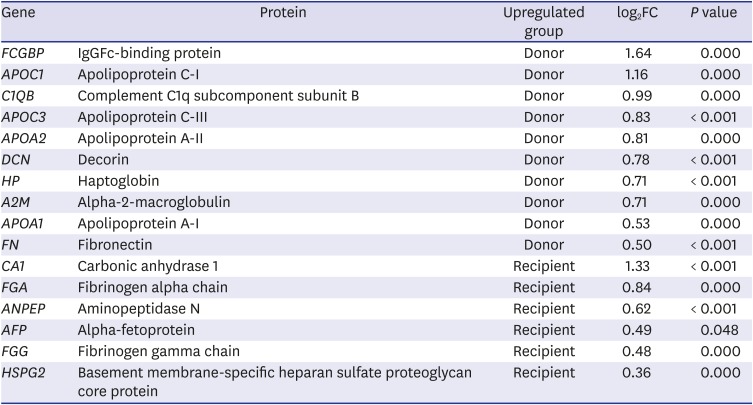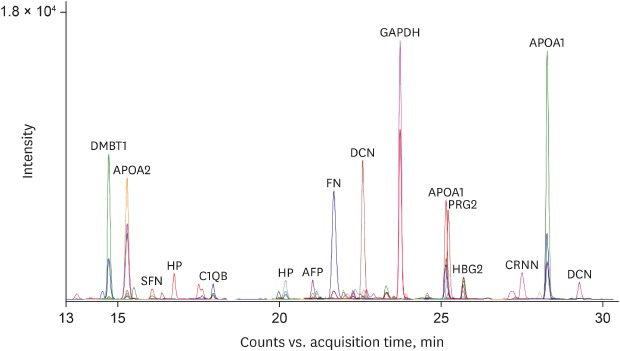1. Lewi L, Jani J, Blickstein I, Huber A, Gucciardo L, Van Mieghem T, et al. The outcome of monochorionic diamniotic twin gestations in the era of invasive fetal therapy: a prospective cohort study. Am J Obstet Gynecol. 2008; 199(5):514.e1–514.e8. PMID:
18533114.

2. Nikkels PG, Hack KE, van Gemert MJ. Pathology of twin placentas with special attention to monochorionic twin placentas. J Clin Pathol. 2008; 61(12):1247–1253. PMID:
18794196.

3. Bajoria R, Wigglesworth J, Fisk NM. Angioarchitecture of monochorionic placentas in relation to the twin-twin transfusion syndrome. Am J Obstet Gynecol. 1995; 172(3):856–863. PMID:
7892875.

4. Quintero RA, Morales WJ, Allen MH, Bornick PW, Johnson PK, Kruger M. Staging of twin-twin transfusion syndrome. J Perinatol. 1999; 19(8 Pt 1):550–555. PMID:
10645517.

5. Paek B, Dorn M, Walker M. Atypical twin-to-twin transfusion syndrome: prevalence in a population undergoing fetoscopic laser ablation of communicating placental vessels. Am J Obstet Gynecol. 2016; 215(1):115.e1–115.e5. PMID:
26827875.
6. Johnson A. Diagnosis and management of twin-twin transfusion syndrome. Clin Obstet Gynecol. 2015; 58(3):611–631. PMID:
26165181.

7. Nesvizhskii AI, Keller A, Kolker E, Aebersold R. A statistical model for identifying proteins by tandem mass spectrometry. Anal Chem. 2003; 75(17):4646–4658. PMID:
14632076.

8. Pavelka N, Pelizzola M, Vizzardelli C, Capozzoli M, Splendiani A, Granucci F, et al. A power law global error model for the identification of differentially expressed genes in microarray data. BMC Bioinformatics. 2004; 5(1):203. PMID:
15606915.
9. Cho BK, Koo YD, Kim K, Kang MJ, Lee YY, Kim Y, et al. Determination of selected reaction monitoring peptide transitions via multiplexed product-ion scan modes. Rapid Commun Mass Spectrom. 2014; 28(7):773–780. PMID:
24573808.

10. Choi M, Chang CY, Clough T, Broudy D, Killeen T, MacLean B, et al. MSstats: an R package for statistical analysis of quantitative mass spectrometry-based proteomic experiments. Bioinformatics. 2014; 30(17):2524–2526. PMID:
24794931.

11. Morrissey B, O'Shea C, Armstrong J, Rooney C, Staunton L, Sheehan M, et al. Development of a label-free LC-MS/MS strategy to approach the identification of candidate protein biomarkers of disease recurrence in prostate cancer patients in a clinical trial of combined hormone and radiation therapy. Proteomics Clin Appl. 2013; 7(5-6):316–326. PMID:
23670859.

12. Heywood WE, Galimberti D, Bliss E, Sirka E, Paterson RW, Magdalinou NK, et al. Identification of novel CSF biomarkers for neurodegeneration and their validation by a high-throughput multiplexed targeted proteomic assay. Mol Neurodegener. 2015; 10(1):64. PMID:
26627638.

13. Addona TA, Shi X, Keshishian H, Mani DR, Burgess M, Gillette MA, et al. A pipeline that integrates the discovery and verification of plasma protein biomarkers reveals candidate markers for cardiovascular disease. Nat Biotechnol. 2011; 29(7):635–643. PMID:
21685905.

14. Pierce BT, Pierce LM, Wagner RK, Apodaca CC, Hume RF Jr, Nielsen PE, et al. Hypoperfusion causes increased production of interleukin 6 and tumor necrosis factor α in the isolated, dually perfused placental cotyledon. Am J Obstet Gynecol. 2000; 183(4):863–867. PMID:
11035327.

15. Allard L, Lescuyer P, Burgess J, Leung KY, Ward M, Walter N, et al. ApoC-I and ApoC-III as potential plasmatic markers to distinguish between ischemic and hemorrhagic stroke. Proteomics. 2004; 4(8):2242–2251. PMID:
15274118.

16. Florez H, Mendez A, Casanova-Romero P, Larreal-Urdaneta C, Castillo-Florez S, Lee D, et al. Increased apolipoprotein C-III levels associated with insulin resistance contribute to dyslipidemia in normoglycemic and diabetic subjects from a triethnic population. Atherosclerosis. 2006; 188(1):134–141. PMID:
16298371.

17. Béliard S, Nogueira JP, Maraninchi M, Lairon D, Nicolay A, Giral P, et al. Parallel increase of plasma apoproteins C-II and C-III in type 2 diabetic patients. Diabet Med. 2009; 26(7):736–739. PMID:
19573124.

18. Kim SM, Park JS, Norwitz ER, Lee SM, Kim BJ, Park CW, et al. Identification of proteomic biomarkers in maternal plasma in the early second trimester that predict the subsequent development of gestational diabetes. Reprod Sci. 2012; 19(2):202–209. PMID:
22101237.

19. Brewer HB Jr. Hypertriglyceridemia: changes in the plasma lipoproteins associated with an increased risk of cardiovascular disease. Am J Cardiol. 1999; 83(9B):3F–12F.

20. Bos S, Phillips M, Watts GF, Verhoeven AJ, Sijbrands EJ, Ward NC. Novel protein biomarkers associated with coronary artery disease in statin-treated patients with familial hypercholesterolemia. J Clin Lipidol. 2017; 11(3):682–693. PMID:
28434814.

21. Stubendorff B, Finke S, Walter M, Kniemeyer O, von Eggeling F, Gruschwitz T, et al. Urine protein profiling identified alpha-1-microglobulin and haptoglobin as biomarkers for early diagnosis of acute allograft rejection following kidney transplantation. World J Urol. 2014; 32(6):1619–1624. PMID:
24549629.

22. Ishimoto I, Sohara E, Ito E, Okado T, Rai T, Uchida S. Fibronectin glomerulopathy. Clin Kidney J. 2013; 6(5):513–515. PMID:
26064516.

23. Alvarez BV, Quon AL, Mullen J, Casey JR. Quantification of carbonic anhydrase gene expression in ventricle of hypertrophic and failing human heart. BMC Cardiovasc Disord. 2013; 13(1):2. PMID:
23297731.

24. Torella D, Ellison GM, Torella M, Vicinanza C, Aquila I, Iaconetti C, et al. Carbonic anhydrase activation is associated with worsened pathological remodeling in human ischemic diabetic cardiomyopathy. J Am Heart Assoc. 2014; 3(2):e000434. PMID:
24670789.

25. Iqbal S, Saleem M, Azim MK, Taha M, Salar U, Khan KM, et al. Carbohydrazones as new class of carbonic anhydrase inhibitors: synthesis, kinetics, and ligand docking studies. Bioorg Chem. 2017; 72:89–101. PMID:
28390994.

26. Huber A, Diehl W, Zikulnig L, Held KR, Bregenzer T, Hackelöer BJ, et al. Amniotic fluid and maternal blood characteristics in severe mid-trimester twin-twin transfusion syndrome. Fetal Diagn Ther. 2004; 19(6):504–509. PMID:
15539875.










 PDF
PDF Citation
Citation Print
Print




 XML Download
XML Download